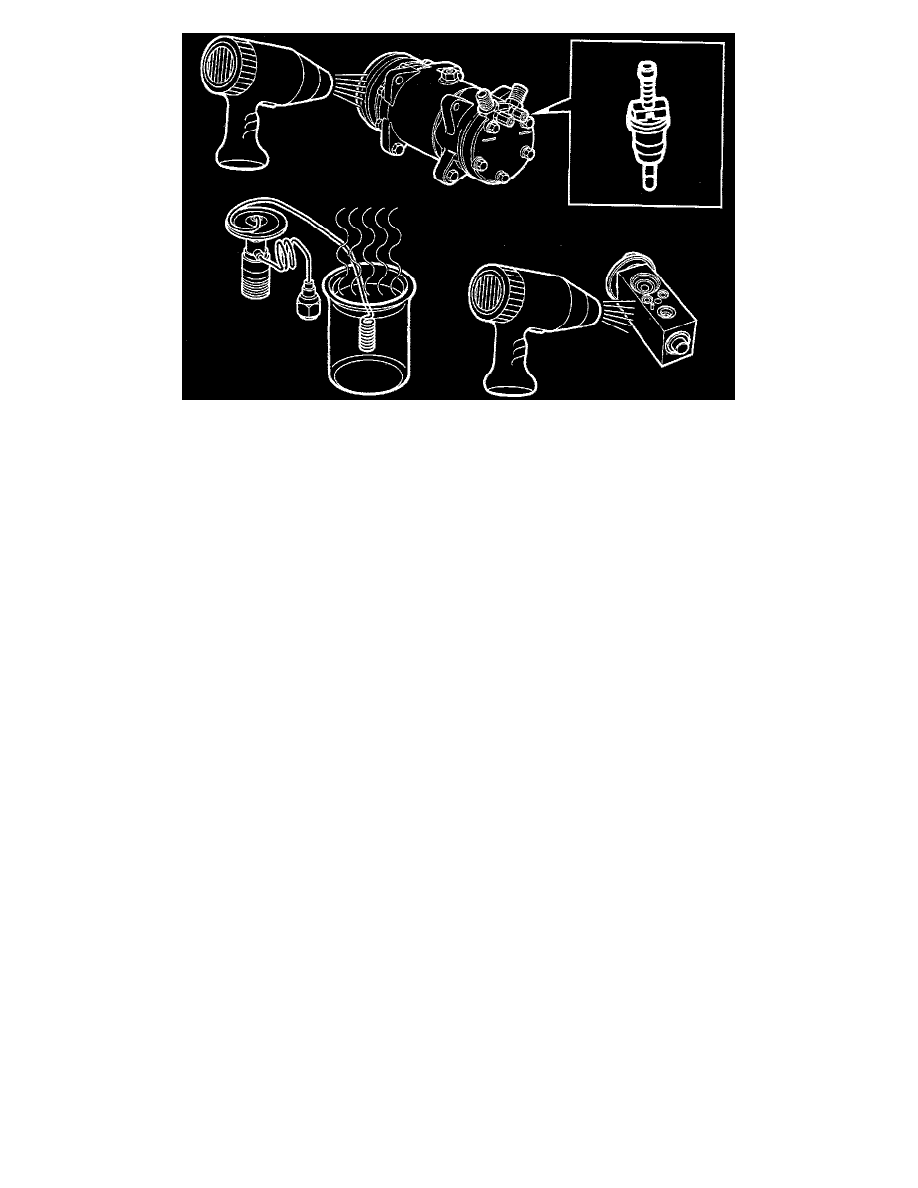9000 L4-1985cc 2.0L DOHC Turbo EFI (1987)

Converting, general
-
When converting from R12 to R134a, the compressor oil must also be changed. The properties of the R12 mineral oil in the system mean that it
does not mix with R134a and does not therefore lubricate the compressor sufficiently. In its place, ester oil should be used in A/C systems which
have been converted to R134a. Note that this only applies to converted A/C systems. In A/C systems which have been filled with R134a during
factory production, PAG oil, and nothing else, should be used. However, it is not sufficient to simply fill the system with ester oil. The old mineral
oil must first be removed. Otherwise, it will form an insulating layer in the evaporator and significantly decrease the performance of the A/C
system.
-
In order to minimize the risk of chemical reactions and loss of cooling performance, at least 90% of the mineral oil should be removed before the
new refrigerant is charged.
NOTE: That the total quantity of mineral oil in the A/C system can vary (as the system may have been repaired without the correct quantity of oil
being added).
-
When refrigerant is emptied from the A/C system, mineral oil remains in the various parts of the system. In order to remove at least 90% of the
mineral oil, the A/C system must be flushed with R12 using a special method.
-
During flushing, the A/C system is first emptied of R12. Liquid R12 is then charged on the high-pressure side of the compressor The refrigerant
circulates in the A/C system and is removed through an adapter in the compressor's oil filler connection. When flushing, it is important to remove
all restrictions in the A/C system and equipment, such as Schrader valves, so that there is free flow. The expansion valve is held open by heating
its sensor to max. 50 °C.
-
As the system is working with refrigerant in liquid form at a pressure lower than normal operating pressure, the mineral oil will float on top of the
refrigerant. The oil flows around the A/C system with the refrigerant and is removed through the oil filler connection at the top of the compressor
-
In order to reach oil which is pressed up into pockets, the fluid level should be raised and lowered during rinsing. When level is' lowered, the oil
comes down from these pockets. Fluid level can be seen in the sight glass and can also be read as pressure changes on the pressure gauges
connected to the suction side of the draining station. When converting to R134a in markets with a hot climate, an extra radiator fan can be fitted in
front of the condenser on the Saab 9000 in order to increase cooling performance.
Equipment Alternatives
Alternative 1 - AKA Mini Force
This equipment is a draining and cleaning station, especially developed for convening the A/C system from R12 to R134a. This equipment has
larger capacity then normal service equipment for this work and work only takes about half the time it would normally take using the ordinary
equipment for A/C work.
Alternative 2
Traditional Robinair service equipment with flushing unit and solenoid valve set. This equipment requires access to Robinair R12 draining and
cleaning equipment. This equipment must be complemented with a flushing kit for flushing the car's A/C system. In order to reduce the time it
takes for a mechanic to carry out this work, this equipment has been provided with an additional solenoid valve set which, using pulse relays
automatically monitors the flushing of the A/C system.
Alternative 3
